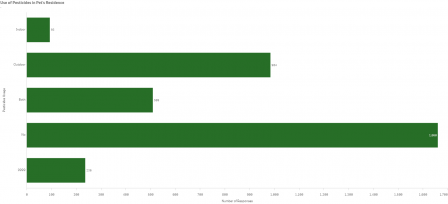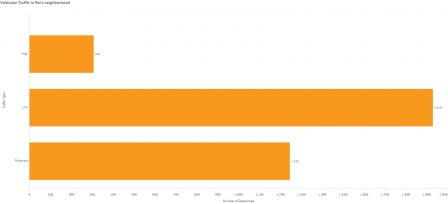National Pet Health Survey
Healthy Pets, Healthy People
EPA and the One Health Commission administered The National Pet Health Survey to gather voluntary information from pet owners to evaluate health trends in cats and dogs across the United States.
The data collection for the National Pet Health Survey ended on April 30, 2019. We will provide our analysis of the data as updates to this webpage. Future collection of data for the National Pet Health Survey will be conducted by the One Health Commission; information pertaining to future surveys can be found on their website.
- Survey Information
Companion animals can have a direct beneficial effect on the health and well-being of owners and families. They can also be important sentinels of environmental conditions in and around the homes of their people.
Why collect information on pets?
More than half of U.S. households own a pet dog or cat. These companion animals can have direct benefits to their owners’ health and well-being. Because pets often share their owners’ living spaces and have accelerated life spans, they can also be important indicators of human exposure to chemicals and potential health risks. Pets can be sentinels for diseases and exposures in a shared environment.
What kind of information is being collected in the survey?
The survey collects information on pets and their history, environment, behavior, and health (e.g., the amount of time the dog or cat spends outdoors, or whether they have had issues like cancer, diabetes, flu, or tick-borne illnesses).
How will the data be used?
The intent for the survey data collection is to provide scientists, concerned pet owners, and the public with one of the largest health and disease databases for pet dogs and cats across the United States. Where possible the data will be summarized into data layers and integrated into EPA’s EnviroAtlas website (www.epa.gov/enviroatlas). Through EnviroAtlas, the public will be able to display pet health information by specified areas, such as zip codes or states, to learn about emerging pet health issues.
Who can respond to the survey?
Anyone who has a pet cat or dog, or both, can respond to the survey. Multiple surveys can be completed for different pets in the same household. The survey does not collect information about pets other than cats and dogs.
Pet Health Survey Results
U.S. EPA National Pet Health Survey poster presented at the Citizen Science Festival.
Summary
- Almost 3700 surveys completed
- A large variety of breeds represented
Pet Demographics
- Half the cats and 70% of dogs lived with at least one other pet in the home
- More than two-thirds of surveys completed were for dogs
Residential Exposures
- 1/3 of survey respondents reported living in a home built more than 50 years ago
|
Use of Pesticides in Pet's Residence |
Vehicular Traffic in Pet's neighborhood |
|---|---|
 Click to view larger image Click to view larger image |
 Click to view larger image Click to view larger image |

